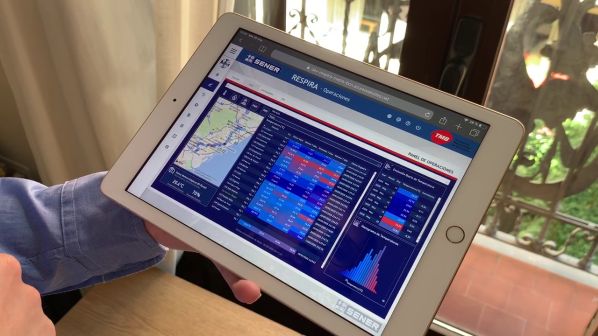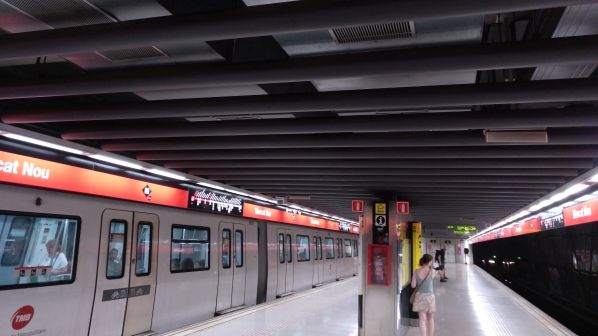RESPIRA, an AI platform developed by Sener, is designed to improve air quality and thermal comfort while using energy efficiently. The system uses different criteria and real-time parameters, such as the temperature, humidity and air quality in metro stations, and electricity consumption.
These data are used by a dynamic algorithm to predict the environmental conditions inside stations, depending on the weather forecast, expected ridership and other factors, to apply a mode of operation to each fan to improve air quality and thermal comfort while minimising electricity consumption.
The system also maximises the amount of fresh air on station platforms, which improves air quality and therefore reduces the risk of spreading coronavirus and other microorganisms.
“Respira can play an important role in improving the health and comfort of hundreds of thousands of riders who use the metro annually,” says Mr Oscar Julià, Sener’s innovation director. “Respira is an example of how an AI solution can help mitigate the impact of this pandemic.”
Respira offers several benefits to operators, such as rapid detection of abnormal operation, improved maintenance, lower electricity consumption, and help in determining those areas where new investment is justified, thus contributing to the efficient and sustainable management of assets.
“Energy savings could reach 30-40% in the winter months, which would mean an average annual saving of 20-25%.”
Ms Silvia Figuerola, Sener’s Respira team data manager
Last summer, Barcelona Metropolitan Transport (TMB) implemented an innovative smart ventilation regulation system using Respira on the metro network to improve environmental quality, hygiene and passenger comfort in stations.
This project followed previous work carried out on Line 1 to verify the importance of dynamic ventilation control. TMB and Sener started to collaborate in 2018 on an engineering study of the ventilation on Line 1 of the Barcelona Metro. For the first time on an operational metro line, the infrastructure, trains and equipment were mathematically modelled, and all possible ventilation operating modes were studied analytically.
As a result, in March 2019, the ventilation operating modes changed statically, yielding a 1.2ºC reduction in hottest stations on the line compared with the same period the previous year.
The study showed that an optimised ventilation strategy should take into account interior and outdoor environmental conditions as well as other parameters of a specific station, and be updated every hour dynamically based on changes to these conditions.
Operation
Respira is now in operation on lines 1 to 5 of the Barcelona metro. An initial analysis between July and October 2020 of the data from Line 1, which was the first line to implement Respira, shows an 11.8% reduction in energy use and a 1.3ºC average drop in temperature compared with 2019, and a 2.5ºC reduction compared with 2018.
“Energy savings could reach 30-40% in the winter months, which would mean an average annual saving of 20-25%,” says Ms Silvia Figuerola, Sener’s Respira team data manager. “Respira will allow TMB to be more efficient in its maintenance work by quickly detecting any abnormal operation in specific devices and helping to determine the areas where new investment is necessary from a cost:benefit standpoint. In this way, the system contributes to efficient and sustainable asset management.”
To help identify the risk of contagion from Sars-CoV2 in enclosed spaces, Sener has integrated into the Respira AI system an indicator developed by a group of scientists led by Prof Jose Luis Jimenez from the University of Colorado which estimates the risk of contagion through aerosols in enclosed spaces.
Respira can do this calculation in real-time from the data captured by using new IoT technologies. Respira uses the real-time analysis of the contagion risk to make decisions and adjust the ventilation so that environmental conditions are always maintained to reduce the risk of transmission, ensuring good air quality indoors.
“Respira is part of Sener’s commitment to provide solutions at this strange time we are living in, but this project is not limited to Covid.”
Mr Oscar Julià, Sener’s innovation director
“Having an estimation of the infection risk in each space of our infrastructure or buildings not only lets us control the ventilation to improve environmental conditions, it also lets us adjust the occupancy limit dynamically, as well as the maximum exposure time according to the pandemic situation in geographical and temporal terms,” says Mr Guillem Peris, Sener’s Respira project director.
Sener has signed a partnership agreement with the Spanish Council for Scientific Research (CSIC) and the Severo Ochoa Centre for Molecular Biology (CBMSO, CSIC-UAM), to use the Respira control system to verify how ventilation affects the risk of contagion in enclosed spaces and to detect Sars-CoV2 in air samples.

Under this agreement, Sener is providing its Respira AI system while CBMSO (CSIC-UAM) is providing its equipment for capturing airborne viruses and microorganisms, as well as its procedure to identify Sars-CoV2 in filters using optimised PCR methods. Sener is currently testing this integrated system which will be used to quantify the exact number of virus particles present in the air at any given time.
“This collaboration is an opportunity to complement the system developed by Sener and the methods for detecting airborne Sars-CoV2 that we have optimised at CSIC in order to reduce the risk of contagion and improve our health,” says Mr Antonio Alcamí, a CSIC researcher involved in the project.
Respira offers a solution to prevent infection in enclosed spaces by integrating this new feature, which reduces the probability of infection risk by aerosols. “Respira is part of Sener’s commitment to provide solutions at this strange time we are living in, but this project is not limited to Covid,” Julià says. “Once all this is over, it will be a very important project to enable us to optimise ventilation systems, reduce energy consumption and thus help reduce the energy footprint, key aspects in the Paris commitments against climate change.”

